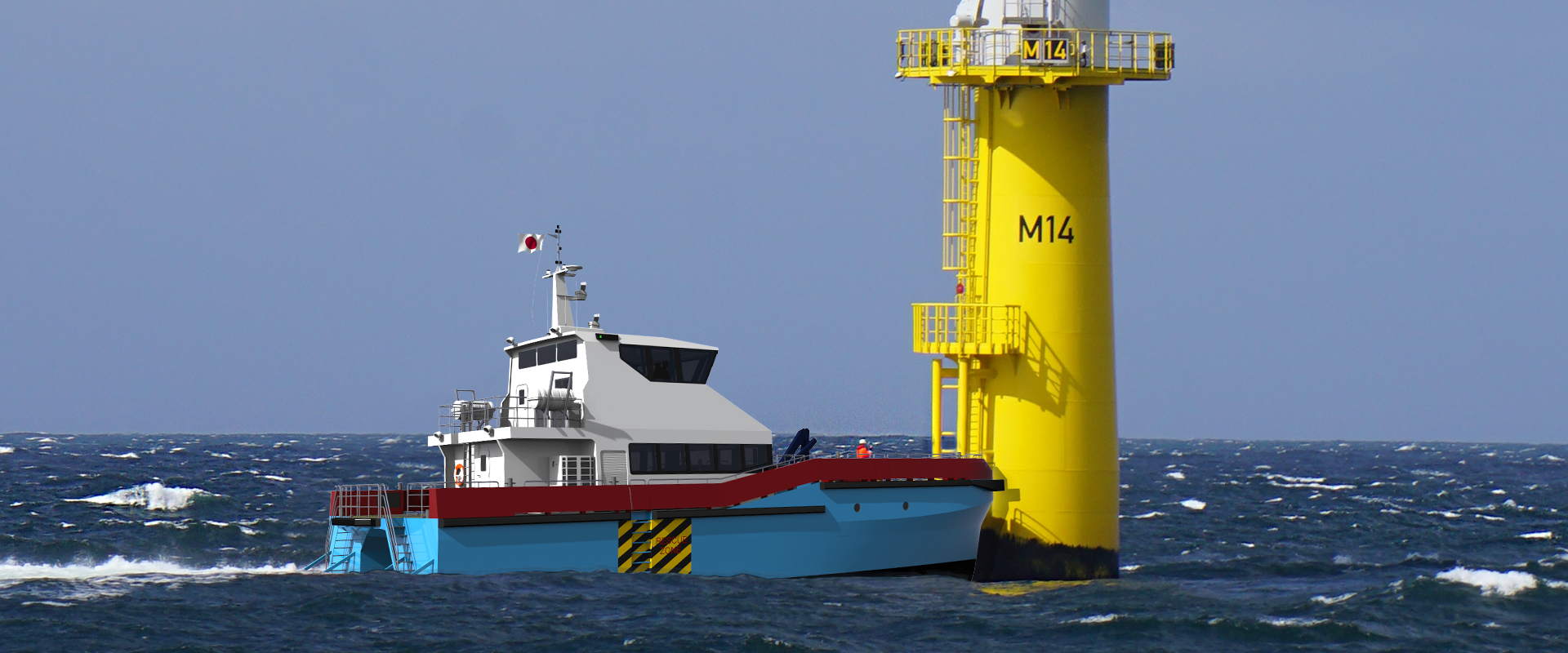
Wind Energy Expo Conference Japan | BMT: Japan’s Wind Farm First
Designing a vessel for a pioneering offshore wind project in Japan requires BMT to work to new rules
7 March 2021
The Akita Noshiro Offshore Windfarm Project, situated off the coast of Akita prefecture in Japan, is a first-in-kind commercial offshore wind project in the country and is expected to provide a combined output of approximately 140MW from two sites. The windfarms at Akita Port and Noshiro Port will be operated by the Akita Offshore Wind Corporation (AOW) and are scheduled to come online towards the end of 2022.
The wind farm service vessel (WFSV) designers at BMT were tasked with the challenge of developing a vessel for this new regulatory and operating environment, providing a platform to enable fast transit of technicians and spares to the turbines offshore.
WFSVs are predominantly required to enable rapid personnel transfer, but also usually have the capability to undertake additional utility works such as the delivery of spares. Personnel transfer from the WFSV to the turbines on this project was planned to use the ‘bump and jump’ method whereby the vessel uses its propulsive power to hold itself against the turbine access ladder (an operation called push-on), allowing technicians to step across.
As a general rule, a WFSV will be designed to strike a balance between operational efficiency, operability and reliability while also balancing out crew and payload requirements.
In addition to operational considerations, the principle design challenge identified by James Lewis, BMT’s lead for offshore energy vessel design, “was to develop a vessel which would adhere to the Class NK rules along with Japanese flag regulations”.
These were both new rule sets for BMT for this vessel type, and influenced all aspects of the vessel’s structure, systems and general arrangements, right down to details such as window calculations.
BMT’s design looked to address the initial efficiency question through the use of a catamaran design. This type of hull typically offers improved resistance and motions in heavier sea states. The catamaran platform itself offers good stability in waves and excellent maneuverability for wind farm transfers.
Waterjets were specified for propulsion. These offer better redundancy, with the additional benefit of providing enhanced maneuverability compared with other propulsion types. Each of the four engines and its associated waterjets are completely independent, allowing the master to shut down two or even three drive trains while the vessel is moving at slow speeds in the field.
Operability of a WFSV tends to be governed by the maximum wave environment in which the vessel is capable of safely holding station while pushing-on against the turbine. It is therefore heavily reliant on motion response while undertaking this operation. In its design, BMT looked to maximise the vessel’s utility by introducing a fine forward entry at the bow, reducing bow volume, and moving the location of forward buoyancy pick up aft. This theoretically results in a bow with reduced pitch response which would therefore be pushed off the turbine by waves less readily.
As is often the case, design optimisations targeted at a specific outcome do, however, result in compromises in other areas. In this instance, the reduced buoyancy at the bow reduces the load carrying capacity of the forward part of the hull.
The criticality of the push-on operation led to the design of a wide range of fender systems, each providing different solutions for maintaining contact between the vessel and the turbine in the variable marine environment while also reducing risk of damage. BMT specified its own Active Fender System in this design, with the aim of reducing the risk of damage to turbines during push-on by reducing loads experienced on contact.
This was enabled through increasing the distance over which the vessel decelerates.
Regarding reliability, the design focus here falls on the vessel systems, their spec and any built-in redundancy. Focusing on the main engines and propulsion system as an example, BMT chose to specify four completely independent drive lines to reduce the risk of maintenance downtime for the operator. If one drive line is down, the vessel can continue to operate off the remaining three drive lines.
Maintenance simplicity has also been considered in the engine supplier decision. In Japan, Yanmar engines are a popular choice because operators can benefit from access to local maintenance services, further decreasing downtime over the vessel’s service life. Redundancy considerations have also been applied to the electrical system, with the vessel’s two generators each located in a different hull to provide physical, as well as system, separation.
The new design by BMT has drawn on its previous experience with mid-range crew transfer vessels and WFSVs to deliver a 27m-long catamaran powered by four engines and four waterjets, capable of transit speeds of up to 25kn. The vessel has capacity for a total of 15 persons on board (three crew and 12 technicians) and a cargo carrying capacity of up to 30 tonnes. The design is fully classed and being built to Class NK rules. Two WFSVs are currently under construction at Cheoy Lee Shipyards.
With the first of the WFSVs due to be launched in December and delivery to AOW due for early 2021, the design is still to be tested. Thanks to the Akita Noshiro Offshore Windfarm project’s first-in-kind status, the industry will be watching the vessels’ performance with interest.
*This article has been updated by BMT for Wind Energy Expo Conference Japan 2021 (Tokyo: 3-5 March) and was initially published in Issue 1 2021 of IMarEST’s flagship members’ publication Marine Professional, originally authored by Rob Clark.
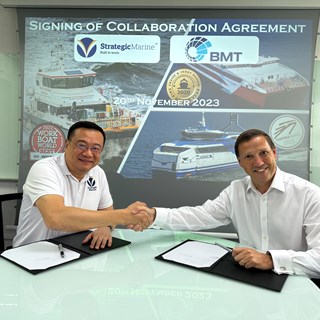
21 November 2023
BMT has signed an agreement with Singapore-based Strategic Marine, forging a powerful collaboration aimed at driving the offshore wind crew vessel industry towards a more sustainable future.
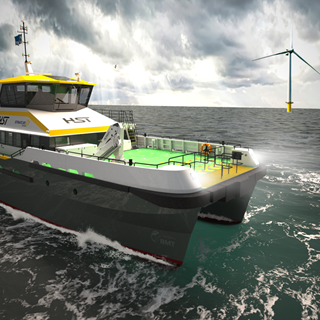
2 March 2023
We are pleased to announce that our latest 27m CTV hybrid vessel design showcasing our patented BMT Active Fender System® and hybrid propulsion system has been selected by HST Marine for the European offshore wind industry.
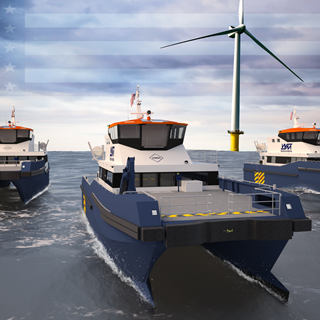
10 February 2022
BMT has been awarded a design contract for three new Crew Transfer Vessels (CTVs) to be operated at east coast wind farms in the US.
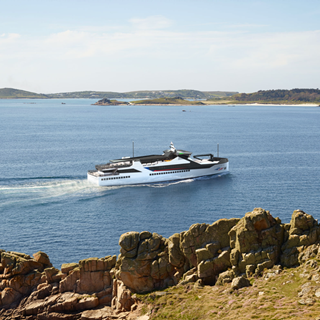
3 June 2021
State-of-the-art designs for the Isles of Scilly Steamship Company’s new passenger and cargo vessels designed by BMT are revealed for the first time.